Engine Control Component Description Without RPO CTF
The engine control module (ECM) is located in the passenger compartment below the right seat. The ECM controls the following:
| • | The fuel supply |
| • | The fuel injection timing |
| • | The on-board diagnostics for powertrain functions |
The ECM constantly observes the information from various sensors. The ECM controls the systems that affect vehicle performance. The ECM performs the diagnostic function of the system. The ECM can recognize operational problems, alert the driver through the malfunction indicator lamp (MIL), and store diagnostic trouble codes (DTCs). DTCs identify the system faults to aid the technician in making repairs.
ECM Function
The ECM supplies 5-12 volts to power various sensors or switches. The power is supplied through resistances in the ECM which are so high in value that a test lamp will not illuminate when connected to the circuit. In some cases, even an ordinary shop voltmeter will not give an accurate reading because the voltmeter resistance is too low. Therefore, a DMM with at least 10-megaohms input impedance is required to ensure accurate voltage readings. The DMM meets this requirement. The ECM controls output circuits such as the injectors, idle speed control (ISC), etc., by controlling the ground or the power feed circuit through transistors or through either of the following two devices:
| • | Output driver modules (ODM) |
| • | Quad driver module (QDM) |
ECM Voltage Description
The ECM supplies a buffered voltage to various switches and sensors. The ECM can do this because resistance in the ECM is so high in value that a test lamp may not illuminate when connected to the circuit. An ordinary shop voltmeter may not give an accurate reading because the voltmeter input impedance is too low. Use a 10-megaohm input impedance DMM, to ensure accurate voltage readings.
The input and/or output devices in the ECM include analog-to-digital converters, signal buffers, counters, and special drivers. The ECM controls most components with electronic switches which complete a ground circuit when turned ON. These switches are arranged in groups of four and seven, called either a surface-mounted QDM, which can independently control up to four output terminals, or QDMs which can independently control up to seven outputs. Not all outputs are always used.
ECM Service Precautions
The ECM is designed to withstand normal current draws associated with vehicle operation. Avoid overloading any circuit. When testing for opens and shorts, do not ground or apply voltage to any of the ECM circuits unless instructed to do so. These circuits should only be tested using a DMM. The ECM should remain connected to the ECM harness or to a recommended breakout box.
Aftermarket Electrical and Vacuum Equipment
Aftermarket or add-on electrical and vacuum equipment is defined as any equipment which connects to the vehicle's electrical or vacuum systems that is installed on a vehicle after the vehicle leaves the factory. No allowances have been made in the vehicle design for this type of equipment.
No add-on vacuum equipment should be added to this vehicle.
Add-on electrical equipment must only be connected to the vehicle's electrical system at the battery power and ground.
Add-on electrical equipment, even when installed to these guidelines, may still cause the powertrain system to malfunction. This may also include equipment not connected to the vehicle electrical system such as portable telephones and radios. Therefore, the first step in diagnosing any powertrain fault is to eliminate all aftermarket electrical equipment from the vehicle. After this is done, if the fault still exists, the fault may be diagnosed in the normal manner.
Electrostatic Discharge Damage
Electronic components used in the ECM are often designed to carry very low voltage. Electronic components are susceptible to damage caused by electrostatic discharge. By comparison, as much as 4,000 volts may be needed for a person to feel even the zap of a static discharge.
There are several ways for a person to become statically charged. The most common methods of charging are by friction and induction.
| • | An example of charging by friction is a person sliding across a vehicle seat. |
Important: To prevent possible electrostatic discharge
damage, follow these guidelines:
|
| • | Charge by induction occurs when a person with well insulated shoes stands near a highly charged object and momentarily touches ground. Charges of the same polarity are drained off leaving the person highly charged with opposite polarity. |
Supply Pump
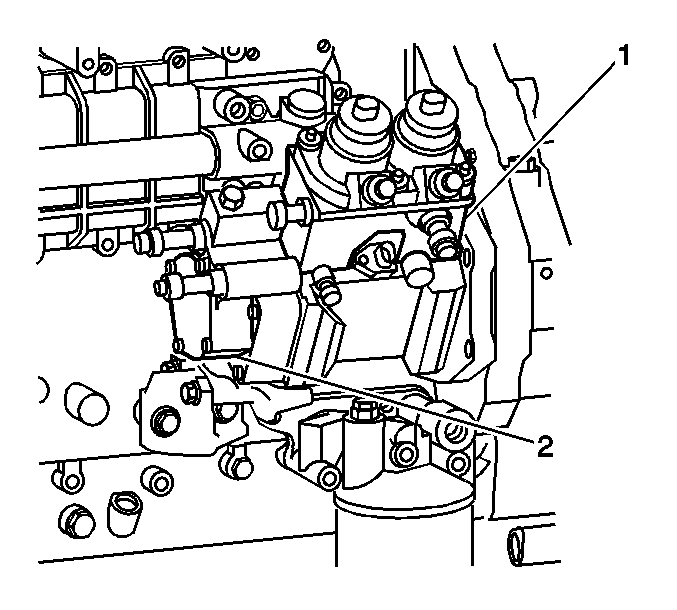
The supply pump is comprised of the pump proper (1) and the feed pump (2).
Engine output transmitted to the idle gear, air compressor, and drive gear and is transmitted through coupling to the camshaft of supply pump.
The plunger is lubricated and cooled with fuel. Do not use any fuel other than the type specified.
The supply pump unit is comprised of the same feed system as is used in the conventional duplex pump and 2 cylinders each having a pressure control valve (PCV). Using a triple action cam has reduced the number of pump cylinders required to 1/3 of the number of engine cylinders, 2 cylinder pump in case of 6 cylinder engine. Further, the number of times of feeding to common rail is equal to that of injection, giving smooth, stable common rail pressure.
Pressure Control Valve (PCV)
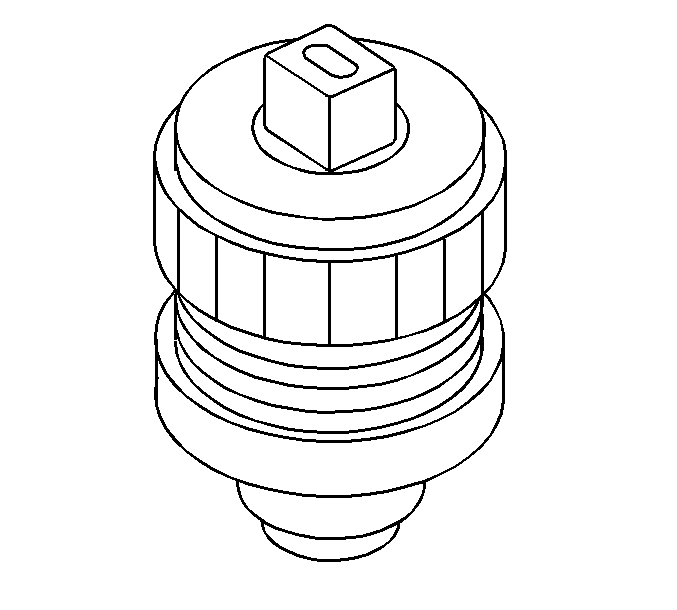
The PCV is used to adjust supply pump discharge amount so as to adjust common rail pressure. Discharge amount from the supply pump to the common rail is determined by continuity timing to PCV.
Feed Pump
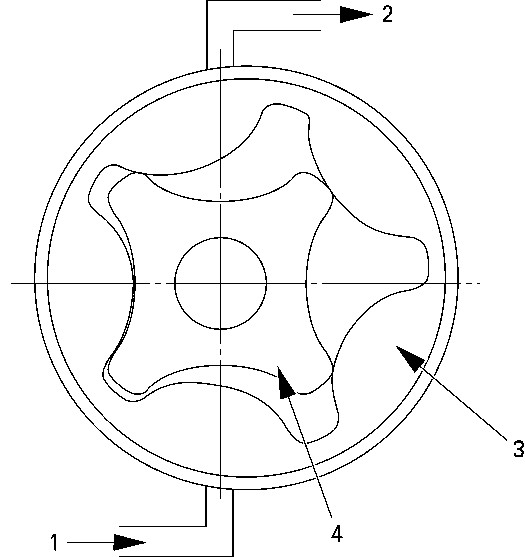
The feed pump is built in the supply pump to pump fuel up and supply fuel through fuel filter into the supply pump unit. Feed pump inside rotor (4) is driven by supply pump camshaft. When the inside rotor starts to rotate, the outside rotor also rotates together with inside rotor. The outside rotor (3) has one more tooth than the inside rotor, therefore, the inside rotor tooth slides on the face of the inside tooth in the outside rotor during rotation. The fuel hold clearance between the outside rotor and the inside rotor tooth causes fuel to be pushed out of the discharge port (2).
Pump Position Camshaft Sensor
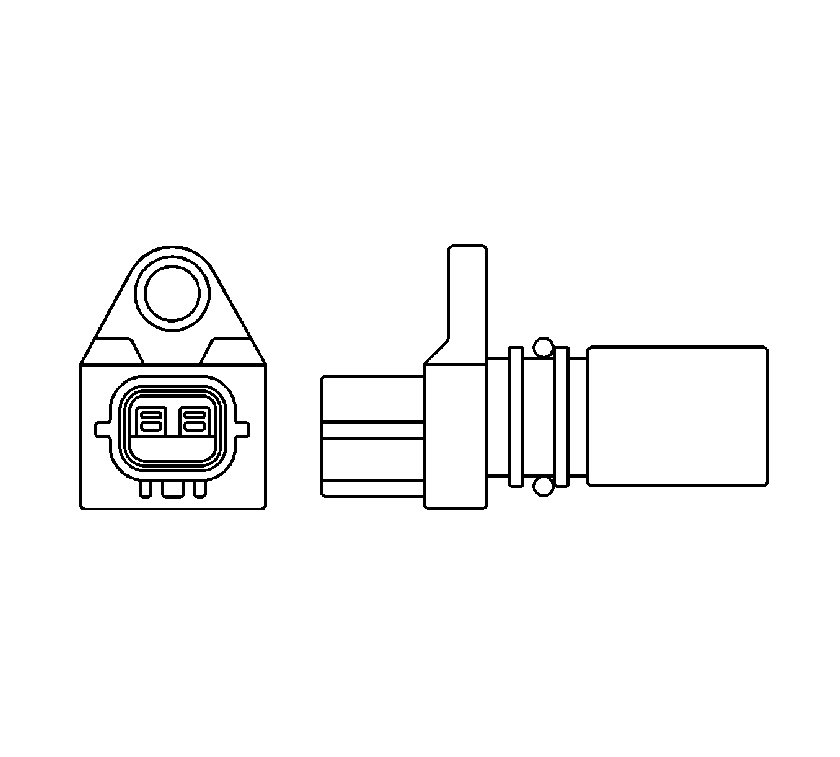
The CAM sensor is installed at the side of the supply pump. The sensor distinguishes the cylinders of the engine. In case of crankshaft position (CKP) sensor trouble, the CAM sensor backs up the detection of engine speed.
This CAM sensor comprises the same parts as in CKP sensor. However, the number of turns of the CAM sensor coil is different from that of CKP sensor, and the CAM sensor is installed to the supply pump.
With the engine started, the pulse notches that are in the middle of the supply pump camshaft will interrupt the magnetic field made by the sensor magnet, thereby generating alternating current.
The pulse notches occur every 60 degrees of camshaft, every 120 degrees of crank angle, with 1 extra tooth.
Therefore, 7 pulses are output per 1 rotation of camshaft, 2 rotations of the engine. The pulse output by the surplus tooth is recognized as engine cylinder number 1 reference pulse.
Common Rail
The common rail is installed on the intake manifold. The common rail is equipped with flow damper, pressure limiter, and common rail pressure sensor.
The common rail unit has a common fuel passage, fuel passage holes, and installing threaded holes. The common fuel passage is a through hole made in the common rail unit. The common rail pressure sensor is installed at the left end of the unit.
Flow Damper
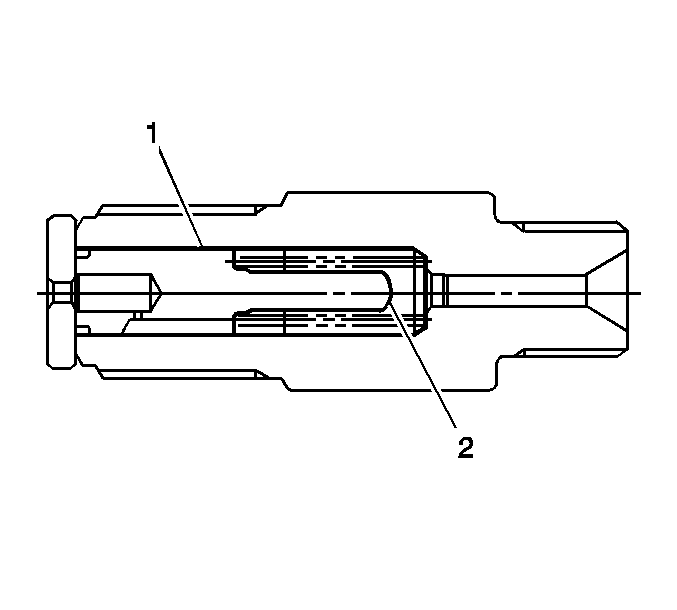
The flow damper comprises a piston (2) and a spring inside a housing (1).
The flow damper is used to damp the pressure pulsating in the common rail and the injection pipe.
During driving the flow of fuel makes the piston move a little to the injector side and float.
Should too much fuel pass the flow damper, the piston moves further toward the injector until the piston comes into contact with the seat surface of the flow damper unit, thereby shutting the fuel passages.
Pressure Limiter
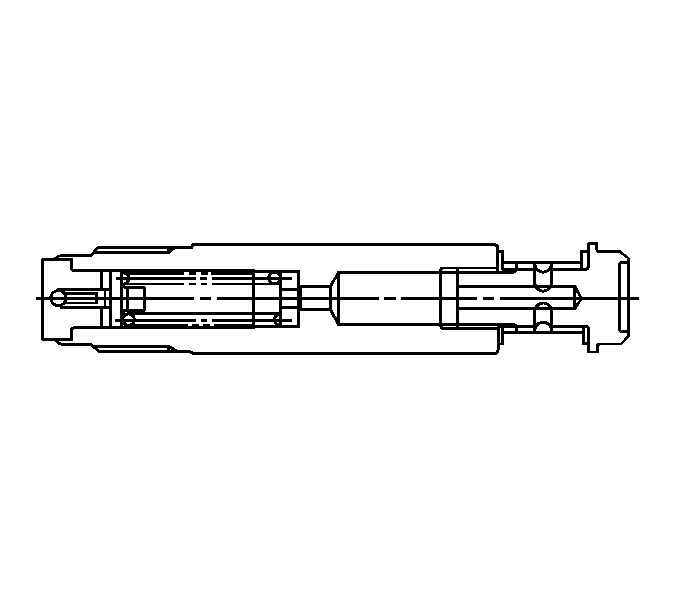
The pressure limiter opens when abnormally high pressure is generated, releasing the pressure. When the common rail pressure reaches approximately 171 MPa (1,744 kg/cm²), the pressure limiter is actuated (opens), and when the pressure drops to approximately 30 MPa (310 kg/cm²), the pressure limiter works to maintain the pressure.
Common Rail Pressure Sensor
The common rail pressure sensor, installed at left end of the common rail, serving the detect fuel pressure. The common rail pressure sensor is a semiconductor type pressure sensor. The sensor utilizes a silicon property, where the electric resistance of pressurized silicone is varied.
A special gasket is used at the connection with the common rail body so as to seal high pressure fuel.
Injector
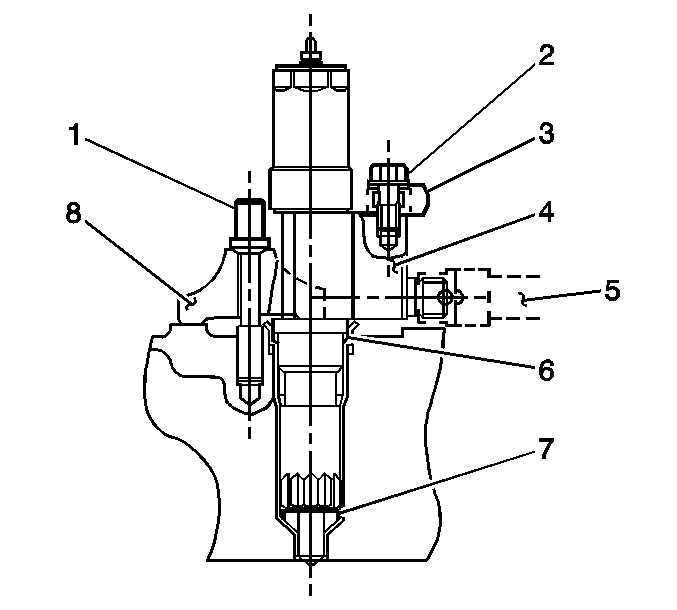
The injector comprises a two-way solenoid valve, hydraulic piston, and nozzle. The solenoid valve controls the injection amount, injection timing, and injection rate of fuel by controlling the pressure in the control chamber.
The nozzle (6) is a multihole type with a injection starting pressure (valve opening pressure) of 8.7 MPa (85 kg/cm²).
The injection body is clamped (7). The cylinder head injection part is provided with an O-ring (5) by which the entry of engine oil into the injector hole of the cylinder head is prevented.
Crank Position (CKP) Sensor
This sensor comprises a permanent magnet, coil, and iron core and is installed in the flywheel housing. With the engine started, the signal holes made on the outer periphery of the flywheel interrupt the magnetic field made by the magnet, thereby generating AC in the coil.
The signal holes on the flywheel are provided every 15 degrees, but one point is holeless. Therefore, the signal holes totals 23. Forty-six pulses are outputted per 2 rotations of the engine, one rotation of supply pump camshaft. By this signal, engine speed and 15 degree based crank angle can be detected.
Engine Coolant Temperature (ECT) Sensor
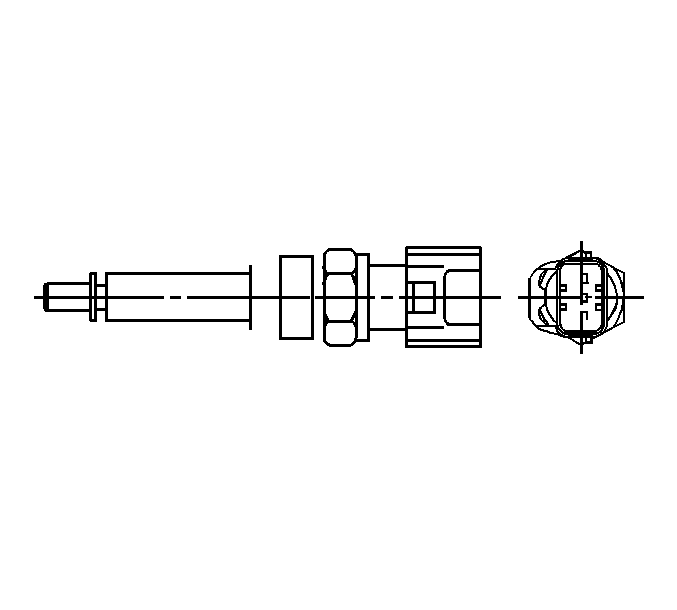
The engine coolant temperature (ECT) sensor is a thermister type installed on the thermostat case. Change in coolant temperature leads to a resistance change signal that is sent to ECM to optimize fuel injection control.
ECM applies voltage to the thermister and detects from the voltage divided between in ECM and thermister resistance values.
Fuel Rail Temperature Sensor

The fuel rail temperature sensor is a thermister type installed in the casing provided in the fuel return circuit.
Change in fuel temperature is changed into a resistance change signal and sent to ECM for optimization of fuel injection control.
Boost Sensor
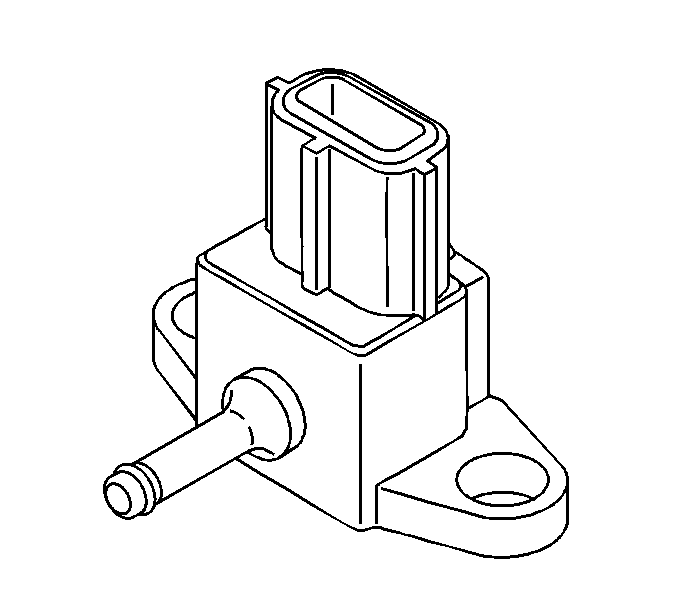
The boost sensor is mounted on the intake manifold and is connected to intake manifold by a vacuum hose.
The boost sensor generates voltage according to air aspiration pressure and generation voltage is input to ECM for boost sensor signal.
Manifold Air Temperature (MAT) Sensor
The manifold air temperature sensor is located on the air intake pipe.
The manifold air temperature is converted into a variable resistance signal and sent to ECM for optimization of fuel injection control.
Barometric Pressure (BARO) Sensor
The BARO pressure sensor is located in the ECM.
The BARO pressure sensor signal send to the ECM for optimization of fuel injection control under vehicle operation high.
Engine Control Component Description with RPO CTF
The engine control module (ECM) processes the various input information. The ECM sends the necessary electrical responses to control fuel delivery.
The input information has an interrelation to more than one output. One failed input can affect more than one systems operation.
Diagnostic System Check - Engine Controls
The Diagnostic System Check - Engine Controls is an organized approach to identify a problem caused by an electronic engine control system malfunction. This diagnostic check must be the starting point for any driveability complaint diagnosis. The diagnostic directs the technician to the next logical step in diagnosing the complaint.
Use the Engine Scan Tool Data Definitions list for a comparison after fulfilling the following items:
| • | Complete the Diagnostic System Check - Engine Controls. |
| • | Confirm that the on-board diagnostics are functioning properly. |
| • | Confirm there are no diagnostic trouble codes. |
The Engine Scan Tool Definitions are an average of display values recorded from normal operating vehicles. The definitions intend to represent what a normal functioning system should display.
Important: Do not use a scan tool that displays faulty data. Report the problem to the manufacturer. Using a malfunctioning scan tool can result in misdiagnosis and unnecessary parts replacement.
Use only the parameters listed in the Engine Scan Tool Data Definitions for diagnosis. When a scan tool reads other parameters, General Motors recommends not using the values for use in diagnosis. For more description on the values and the use of the scan tool to diagnose the ECM inputs, refer to the applicable diagnostic file. When all the values are within the range illustrated in the Engine Scan Tool Data Definitions, refer to Symptoms - Engine Controls .Engine Control Module (ECM) Description

The engine control module (ECM) is located in the inner part of the engine left side cover. The ECM controls the following:
| • | The fuel supply control |
| • | The fuel injection timing control |
| • | The exhaust gas recirculation (EGR) control |
| • | The turbocharger control |
| • | The preheating control (glow control) |
| • | The on-board diagnostics for engine control |
The ECM constantly observes the information from various sensors. The ECM controls the systems that affect vehicle performance. The ECM performs the diagnostic function of the system. The ECM can recognize operational problems, alert the driver through the malfunction indicator lamp (MIL), and store diagnostic trouble codes (DTCs). DTCs identify the system faults to aid the technician in making repairs.
ECM Function
The engine control module (ECM) supplies 5-12 volts to power various sensors or switches. In some cases, the power is supplied through resistances in the engine control module (ECM) are high enough in value that a test lamp will not illuminate when connected to the circuit. In some cases, even an ordinary shop voltmeter will not give an accurate reading because the voltmeter resistance is too low. Therefore, a DMM with at least 10 mega-ohms input impedance is required to ensure accurate voltage readings.
Engine Control Module (ECM) Service Precautions
The engine control module (ECM) is designed to withstand normal current draws associated with vehicle operation. Avoid overloading any circuit. When testing for opens and shorts, do not ground or apply voltage to any of the ECM circuits unless instructed to do so. In some cases, these circuits should only be tested using a DMM. The ECM should remain connected to the ECM harness.
Electrostatic Discharge Damage
Important: To prevent possible electrostatic discharge
damage, follow these guidelines:
• Do not touch the engine control module (ECM) connector pins or soldered
components on the ECM circuit board. • Do not open the replacement part package until the part is ready to be
installed. • Before removing the part from the package, ground the package to a known
good ground on the vehicle. • If the part has been handled while sliding across the seat, while sitting
down from a standing position, or while walking a distance, touch a known good ground
before installing the part. • Charge by induction occurs when a person with well insulated shoes stands
near a highly charged object and momentarily touches ground. Charges of the same polarity
are drained off leaving the person highly charged with opposite polarity.
Electronic components used in the engine control module (ECM) are often designed to carry very low voltage. Electronic components are susceptible to damage caused by electrostatic discharge. By comparison, as much as 4,000 volts may be needed for a person to feel even the zap of a static discharge. There are several ways for a person to become statically charged. The most common methods of charging are by friction and induction.
An example of charging by friction is a person sliding across a vehicle seat.
Malfunction Indicator Lamp (MIL) Operation
The malfunction indicator lamp (MIL) is located in the instrument panel cluster. The MIL will display as either SERVICE ENGINE SOON or one of the following symbols when commanded ON:
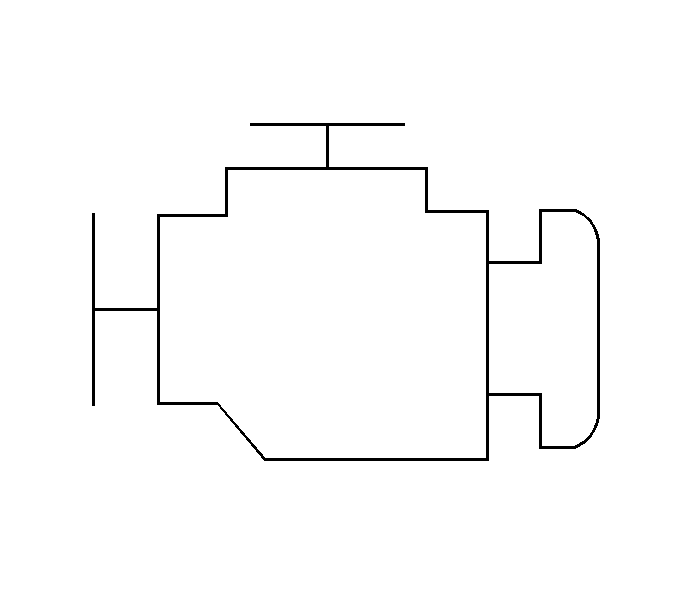
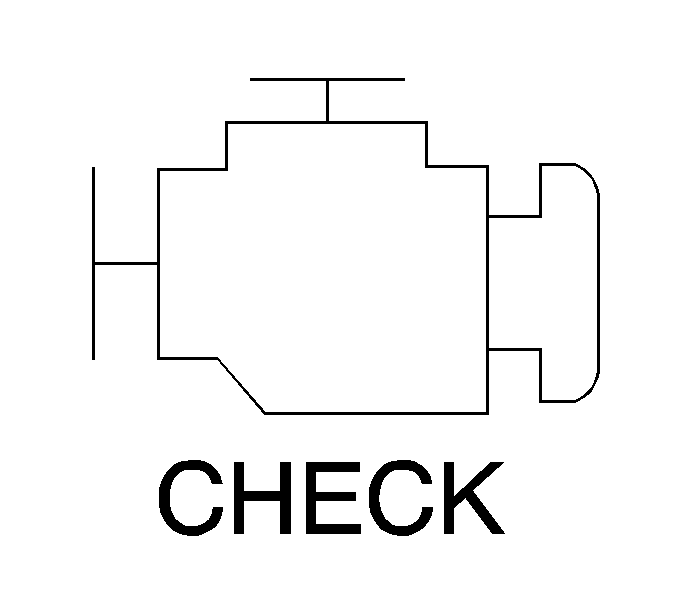
The MIL indicates that an emissions related fault has occurred and vehicle service is required.
The following is a list of the modes of operation for the MIL:
| • | The MIL illuminates when the ignition is turned ON, with the engine OFF. This is a bulb test to ensure the MIL is able to illuminate. |
| • | The MIL turns OFF after the engine is started if a diagnostic fault is not present. |
| • | The MIL remains illuminated after the engine is started if the control module detects a fault. A diagnostic trouble code (DTC) is stored any time the control module illuminates the MIL due to an emissions related fault. The MIL turns OFF after three consecutive ignition cycles in which a Test Passed has been reported for the diagnostic test that originally caused the MIL to illuminate. |
| • | The MIL flashes if the control module detects a misfire condition which could damage the catalytic converter. |
| • | When the MIL is illuminated and the engine stalls, the MIL will remain illuminated as long as the ignition is ON. |
| • | When the MIL is not illuminated and the engine stalls, the MIL will not illuminate until the ignition is cycled OFF and then ON. |
Aftermarket (Add-On) Electrical And Vacuum Equipment
Any equipment installed on a vehicle after leaving the factory that connects to the electrical or vacuum systems of the vehicle defines aftermarket (Add-On) electrical and vacuum equipment. The vehicle design makes no allowances for this type of equipment.
Notice: Do not attach add-on vacuum operated equipment to this vehicle. The use of add-on vacuum equipment may result in damage to vehicle components or systems.
Notice: Connect any add-on electrically operated equipment to the vehicle's electrical system at the battery (power and ground) in order to prevent damage to the vehicle.
The add-on electrical equipment, even when installed to these strict guidelines, may still cause the powertrain system to malfunction. This may also include any equipment which is not connected to the electrical system of the vehicle such as portable telephones and radios. Therefore, the first step in diagnosing any powertrain problem is to eliminate all of the aftermarket electrical equipment from the vehicle. After this is done, if the problem still exists, diagnose the problem in the normal manner.
Engine Controls Information
The driveability and emissions information describes the function and operation of the control module. The emphasis is placed on the diagnosis and repair of conditions related to the system.
Engine Components, Wiring Diagrams, and Diagnostic Trouble Code (DTC) tables:
| • | The Component Locations |
| • | The Wiring Diagrams |
| • | The Control Module Terminal End View and Terminal Definitions |
| • | The Diagnostic System Check - Engine Controls |
| • | The Diagnostic Trouble Code (DTCs) tables |
The Component System includes the following items:
| • | The component and circuit description |
| • | The On-vehicle service for each subsystem |
| • | The Functional checks with the diagnostic tables |
| • | How To Use Electrical Systems Diagnostic Information |
The DTCs also contain the diagnostic support information containing the circuit or the system information, and helpful diagnostic information.
Wiring Harness Service
The control module harness electrically connects the control module to the various solenoids, switches, and sensors in the vehicle engine compartment and passenger compartment.
Replace the wire harnesses with the proper part number replacement. When splicing signal wires into a harness, use the wiring that has high temperature insulation.
Consider the low amperage and voltage levels utilized in the powertrain control systems. Make the best possible bond at all splices. Use rosin-core solder in these areas.
Molded-on connectors require complete replacement of the connector. Splice a new connector into the harness. Replacement connectors and terminals are listed in Group 8.965 in the Standard Parts Catalog.
For wiring repair, refer to Wiring Repairs in Wiring Systems.
Connectors and Terminals
In order to prevent shorting between opposite terminals, use care when probing a connector and when replacing terminals. Damage to the components could result.
Always use jumper wires between connectors for circuit checking.
Never probe through the Weather-Pack seals.
The J 35616 Connector Test Adapter Kit , or the equivalent, contains an assortment of flexible connectors used in order to probe the terminals during the diagnosis. The fuse remover and the BT-8616 Test Tool, or the equivalent, is used for removing a fuse and to adapt the fuse holder to a meter for diagnosis.
Open circuits are often difficult to locate by sight because oxidation or terminal misalignment are hidden by the connectors. Merely wiggling a connector on a sensor or in the wiring harness may temporarily correct the open circuit. Oxidized or loose connections may cause intermittent problems.
Be certain the type of connector and terminal before making any connector or terminal repair. Weather-Pack and Com-Pack III terminals look similar, but are serviced differently.
Accelerated Pedal Position (APP) Sensor
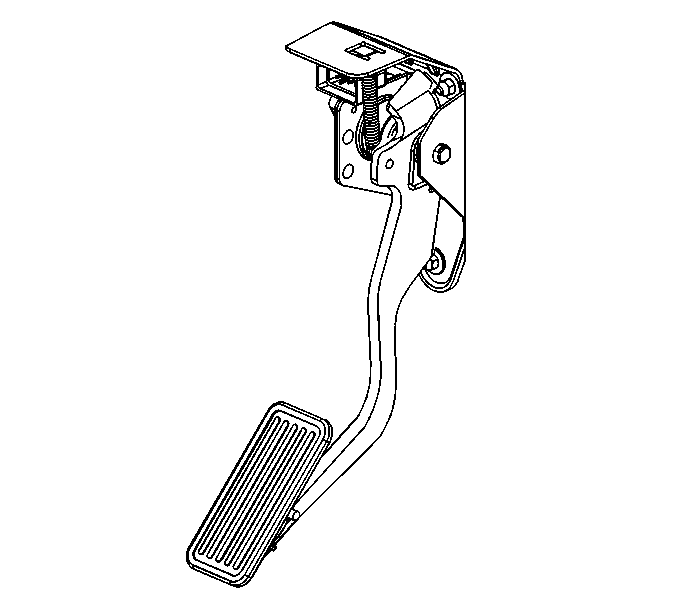
The accelerator pedal position (APP) sensor is mounted on the accelerator pedal control assembly. The sensor is made up of 3 individual sensors within one housing. The engine control module (ECM) uses the APP sensor to determine the amount of acceleration or deceleration desired by the person driving the vehicle via the fuel injector control.
Boost Pressure Sensor
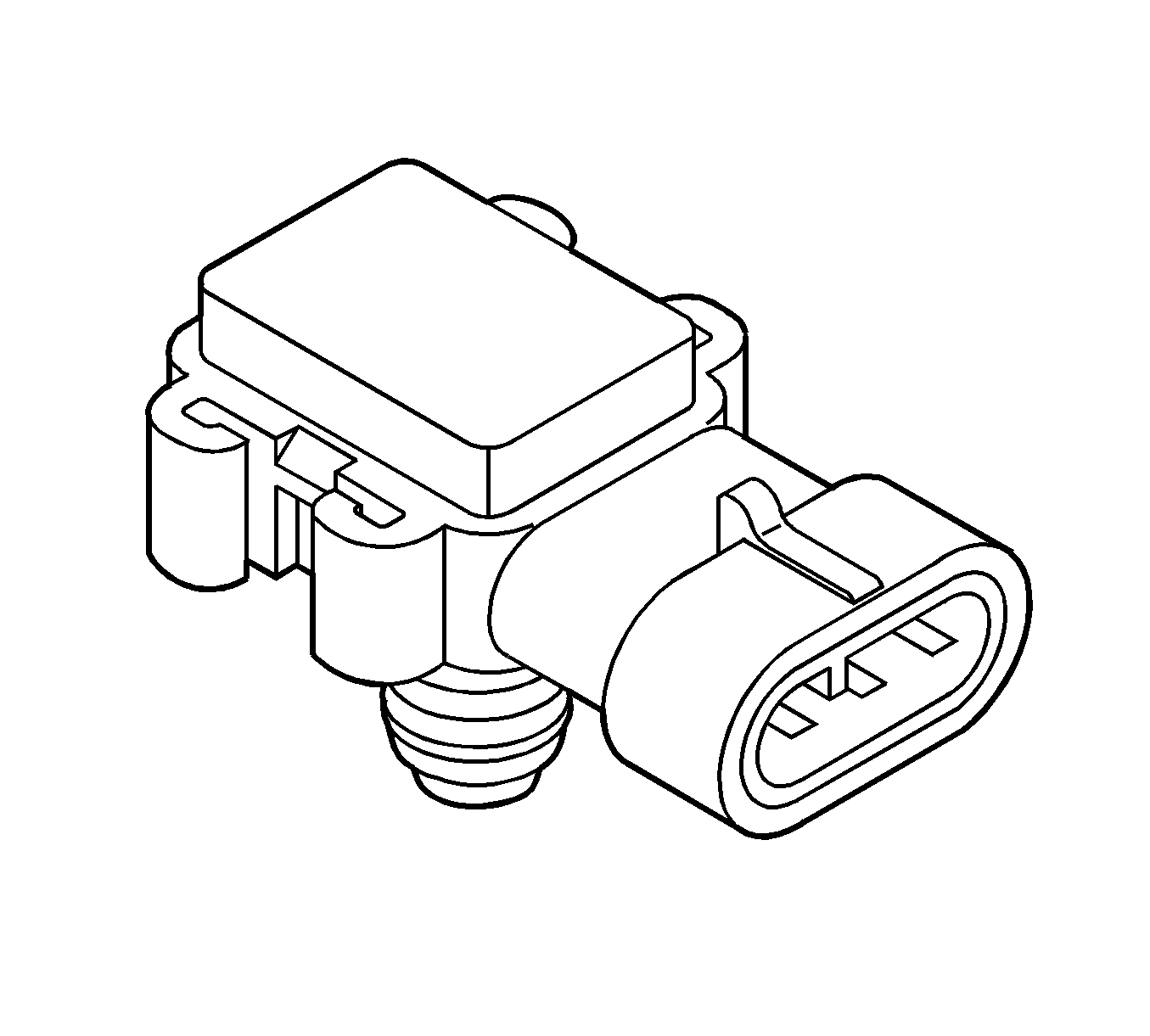
The boost pressure sensor is located on the intake manifold. The sensor generates voltage according to boost pressure in the intake manifold. The generated voltage is sent to the engine control module (ECM) for the boost pressure sensor signal. The ECM detects high signal voltage from the sensor at a high boost pressure.
Camshaft Position (CMP) Sensor
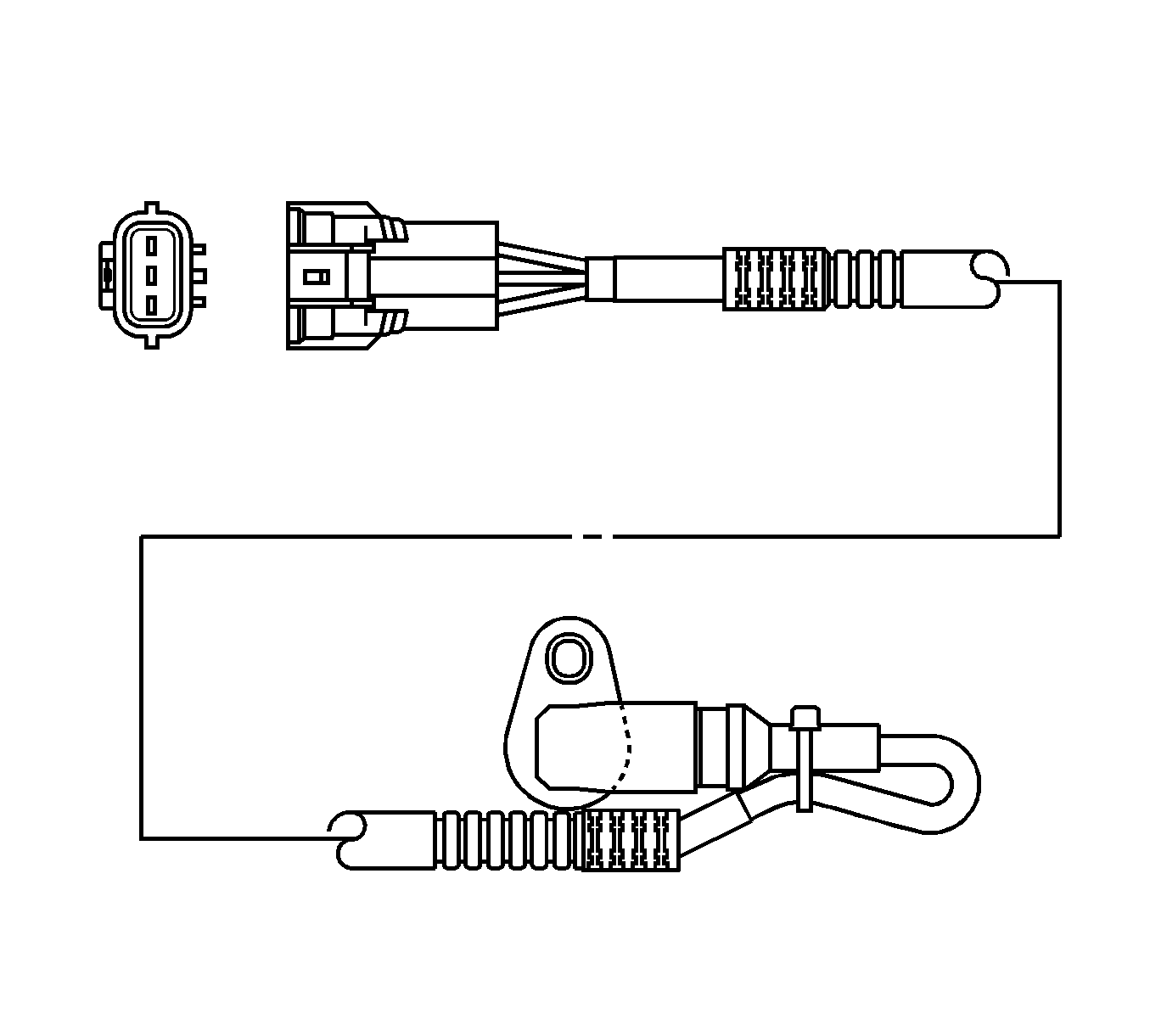
The camshaft position (CMP) sensor is installed on the cylinder head at the rear of the camshaft gear. The CMP sensor detects a total of 7 gaps (6 gaps arranged equally every 60 degrees and one reference gap on the camshaft gear flange surface) and sends signals to the engine control module (ECM). Receiving these signals, the ECM determines cylinder number 1 compression top dead center (TDC). If the CMP sensor fails, the crankshaft position (CKP) sensor signals will substitute for the CMP sensor signals back up.
Crankshaft Position (CKP) Sensor
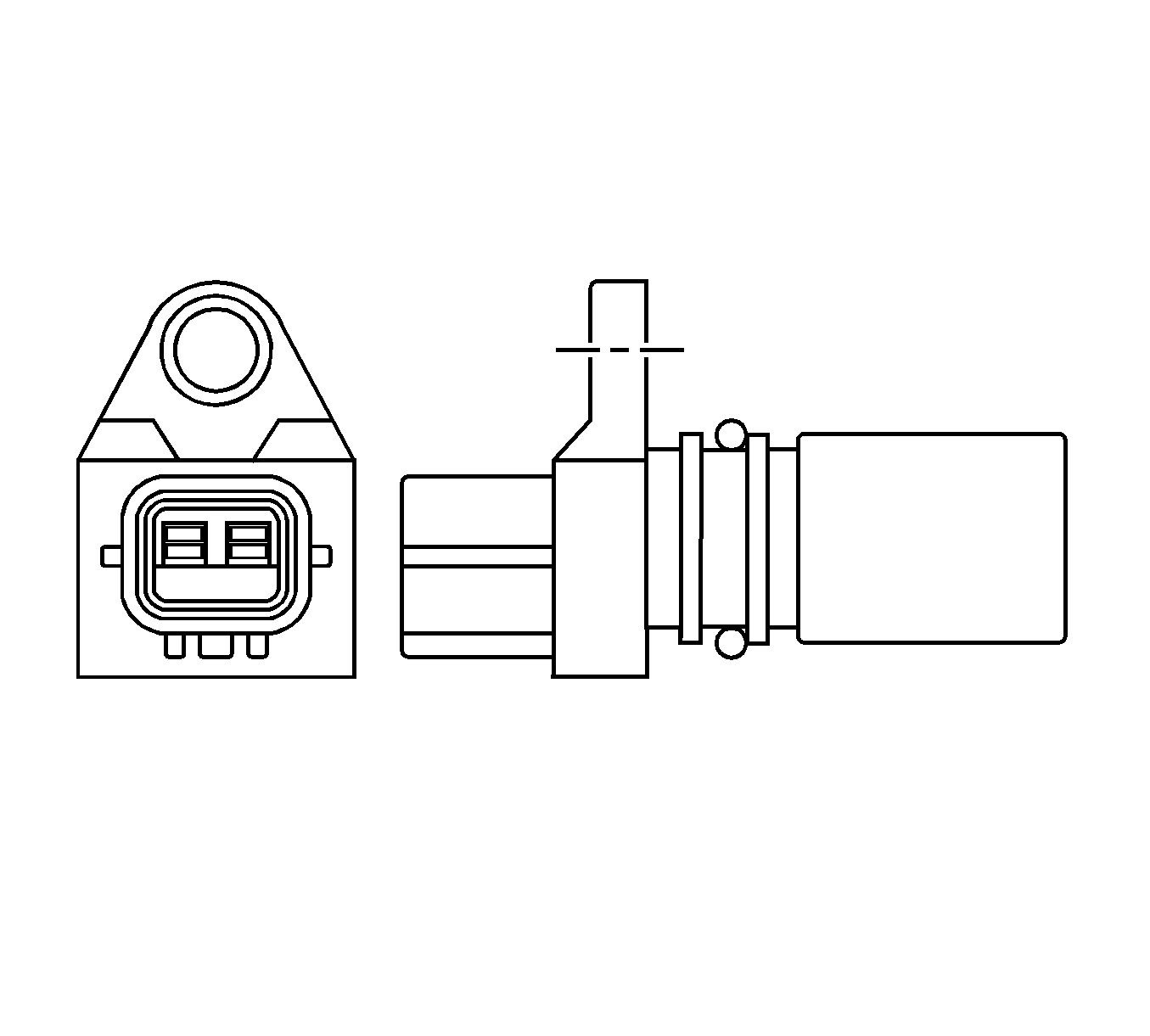
The crankshaft position (CKP) sensor is located on top of the flywheel housing. There are 45 notches spaced 7.5 degrees apart and a 22.5 degree section that is uncut. This uncut portion allows for the defection of top dead center (TDC). The CKP sensor is a magnet coil type sensor, which generates an AC signal voltage based on the crankshaft rotational speed. If the CKP sensor fails, the camshaft position (CMP) sensor signals will substitute for the CKP sensor signals back up.
ECT Sensor

The engine coolant temperature (ECT) sensor is on the thermostat housing and the thermistor in the sensor changes resistance in response to coolant temperature changes. The resistance is decreased when the coolant temperature is high. The resistance is increased when the coolant temperature is low. The engine control module (ECM) supplies a 5-volt reference to the ECT sensor and calculates the engine coolant temperature from the change in voltage, using this in fuel injection control, exhaust gas recirculation (EGR) control, and other control tasks. This voltage is decreased when the resistance is large, temperature is high, while increased when the resistance is large, temperature is low.
Exhaust Gas Recirculation (EGR) Valve and EGR Valve Position Sensor
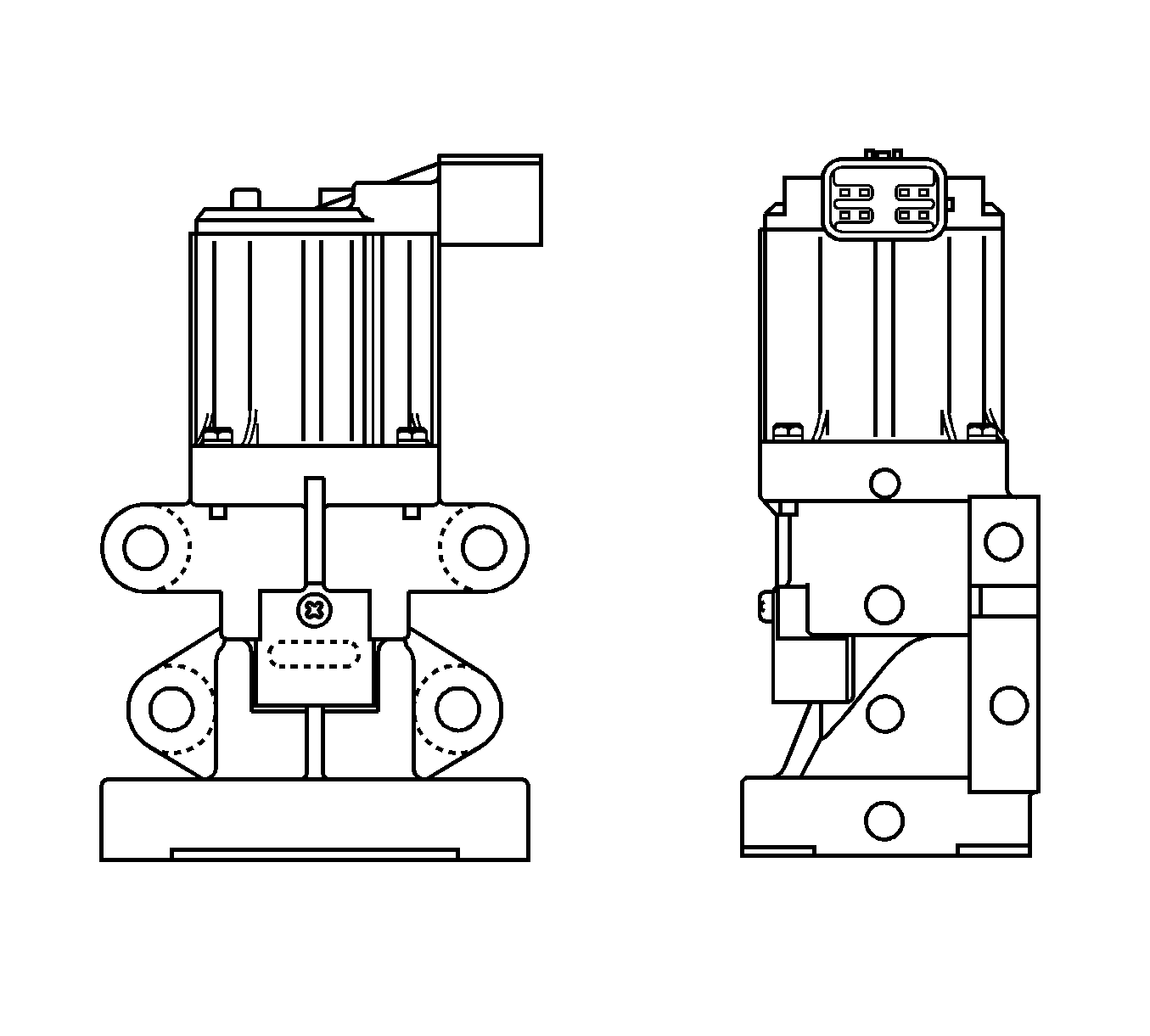
The exhaust gas recirculation (EGR) valve is controlled by an EGR motor. The EGR motor is driven by duty signal from the engine control module (ECM). The ECM calculates the target EGR valve lift based on the engine speed and the target fuel injection quantity.
The EGR valve position sensor provides pulse signals to the ECM. The ECM detects the EGR valve lift by counting the number of pulses from the sensor.
Fuel Rail Pressure Sensor

The fuel rail pressure sensor is in the supply pump. It detects the fuel pressure in the fuel rail, converts the pressure into a voltage signal, and sends the signal to the engine control module (ECM). Higher fuel rail pressure provides higher voltage, while lower pressure provides lower voltage. The ECM calculates actual fuel rail pressure, from the voltage signal and uses the result in fuel injection control and other control tasks.
Fuel Temperature Sensor
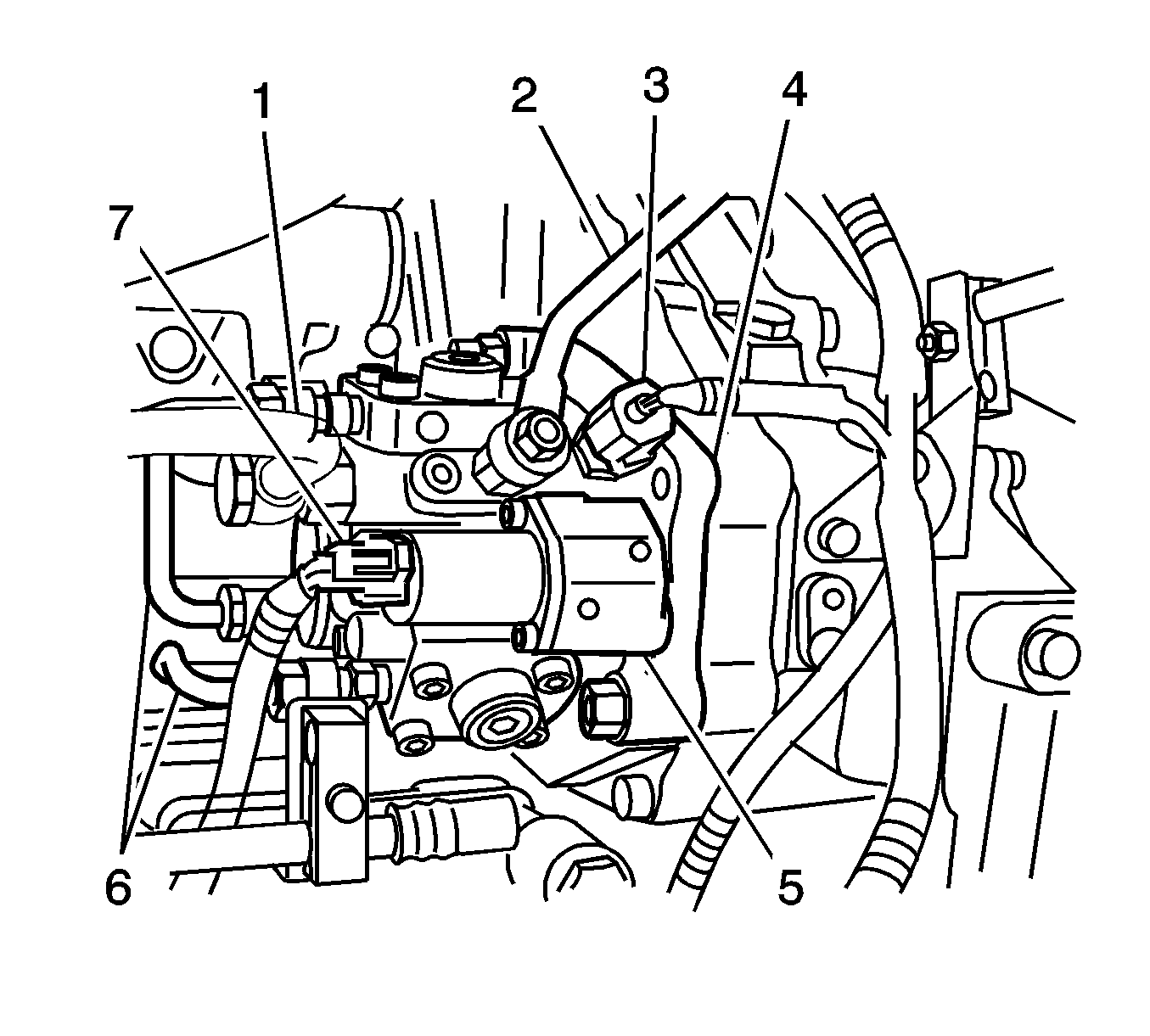
The fuel temperature sensor is on the supply pump and the thermistor in the sensor changes resistance in response to fuel temperature changes. The resistance is decreased when the fuel temperature is high, and increased when the fuel temperature is low. The engine control module (ECM) supplies a 5-volt reference to the fuel temperature sensor and calculates the fuel temperature from the change in voltage. It is used in supply pump control and other control tasks. This voltage is decreased when the resistance is small, temperature high, while increased when the resistance is large, temperature low.
Mass Air Flow (MAF)/Intake Air Temperature (IAT) Sensor
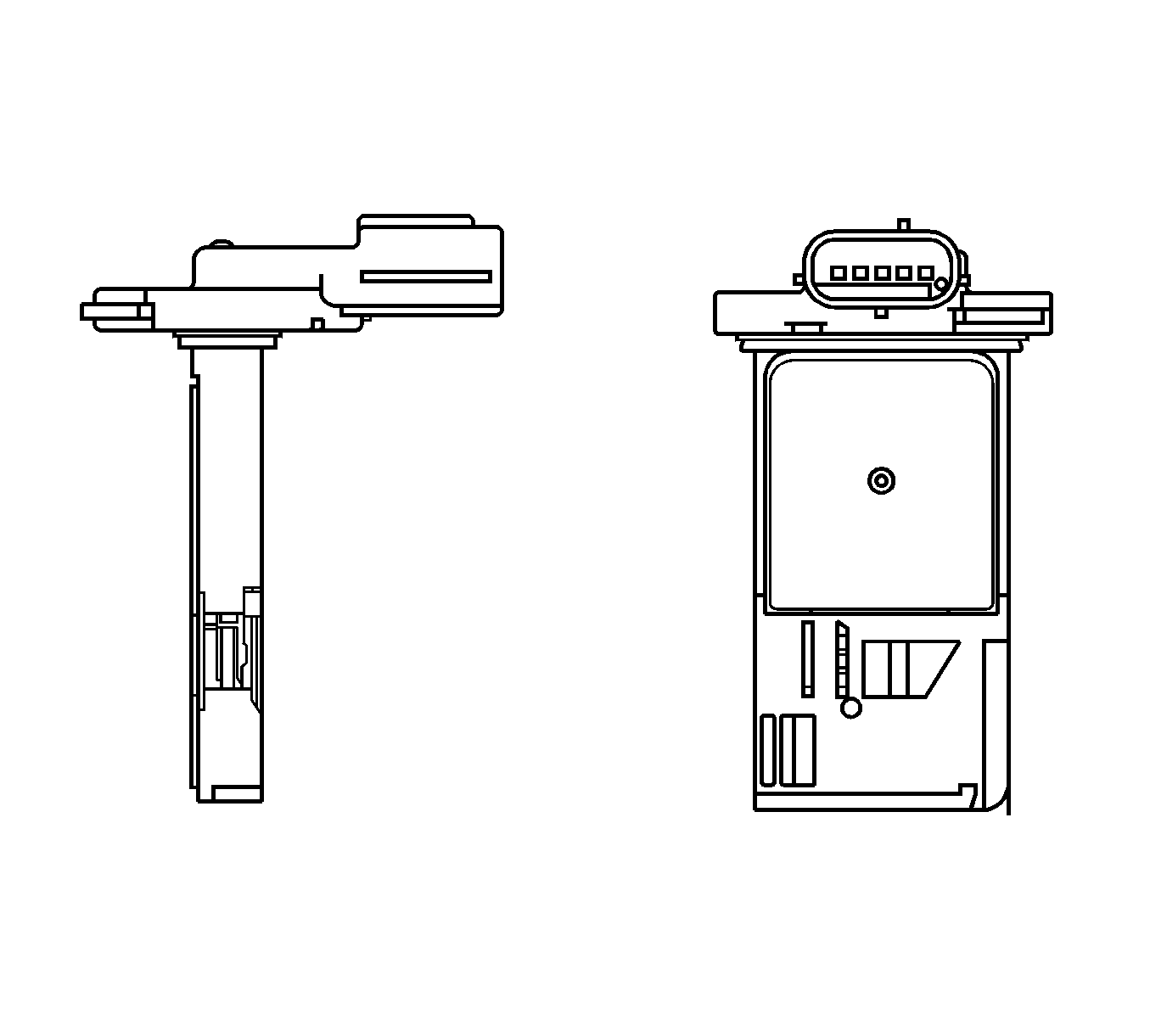
The mass airflow (MAF)/intake air temperature (IAT) sensor is fitted between the air cleaner and the turbocharger. The IAT sensor is a thermistor type sensor. The IAT sensor generates a voltage signal according to intake air temperature. The generated voltage is sent to the engine control module (ECM) for the IAT sensor signal. When the IAT sensor is cold, the sensor resistance is high. When the air temperature increases, the sensor resistance decreases. With high sensor resistance, the ECM detects a high voltage on the IAT signal circuit.
The MAF sensor is an airflow meter that measures the amount of air that enters the engine. The MAF sensor generates a voltage signal according to the amount of airflow and generates voltage input to the ECM for the MAF sensor signal. A small quantity of air that enters the engine indicates deceleration or idle. A large quantity of air that enters the engine indicates acceleration or a high load condition.
Suction Control Valve (SCV)

The suction control valve (SCV) is on the supply pump. The SCV controls the suction fuel quantity. The SCV is fully open in its normal state and a larger drive voltage decreases the opening. Based on the data acquired from the sensors, the engine control module (ECM) calculates the desired common rail pressure and pump flow rate and compares the calculated desired common rail pressure to the actual value to determine the SCV opening. When the actual pressure is lower than the desired value, the SCV is opened to increase the pump flow rate. When the actual pressure is higher than the desired value, the SCV is closed to decrease the flow rate.
